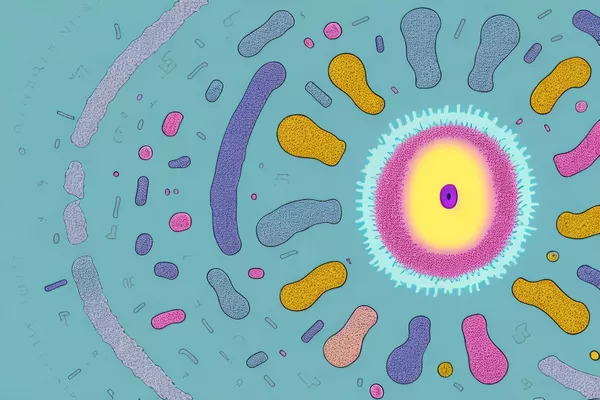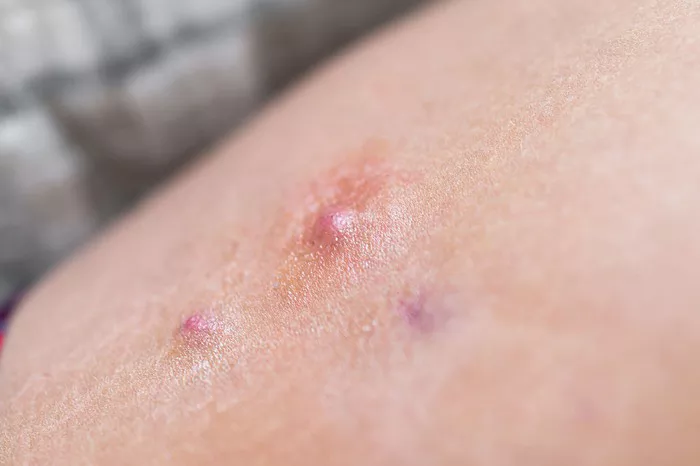Ringworm, despite its name, is not caused by worms but by a group of fungi known as dermatophytes. These fungi thrive on keratin, a protein found in the skin, hair, and nails. The condition is characterized by red, circular, itchy rashes that can occur anywhere on the body. Medically referred to as tinea, ringworm can be classified based on the area it affects: tinea corporis (body), tinea capitis (scalp), tinea pedis (feet), tinea cruris (groin), and tinea unguium (nails).
Common Symptoms
The hallmark of ringworm is the red, circular rash with a clear center. Other symptoms include:
- Itching: Often intense and persistent.
- Scaling: Flaky skin on and around the rash.
- Cracking: Particularly in areas like the feet (athlete’s foot).
- Hair Loss: When it affects the scalp.
Transmission
Ringworm is highly contagious and can spread through:
- Direct Contact: Skin-to-skin contact with an infected person or animal.
- Indirect Contact: Touching contaminated objects like towels, clothing, or surfaces.
- Environmental Contact: Walking barefoot in communal areas like locker rooms or swimming pools.
Diagnosis
A healthcare provider can often diagnose ringworm based on its appearance. However, they may also take a skin scraping for microscopic examination or culture to confirm the diagnosis and identify the specific fungal species.
Treatment Overview
While oral antifungal medications may be necessary for severe or widespread infections, topical treatments are the mainstay for most cases of ringworm. Topical antifungal medications come in various forms, including creams, lotions, gels, and sprays. These treatments work by either killing the fungus or inhibiting its growth.
Best Topical Medications for Ringworm
- Clotrimazole
- Terbinafine
- Miconazole
- Ketoconazole
- Tolnaftate
- Butenafine
- Naftifine
- Ciclopirox
Clotrimazole
- Overview: Clotrimazole is an imidazole antifungal that is widely used for various fungal infections, including ringworm. It works by inhibiting the synthesis of ergosterol, an essential component of fungal cell membranes.
- Usage: Typically applied twice daily for 2-4 weeks.
- Effectiveness: Clotrimazole is effective for most cases of ringworm, especially when used as directed.
- Side Effects: Generally well-tolerated, but some users may experience mild skin irritation or burning.
Terbinafine
- Overview: Terbinafine is an allylamine antifungal that interferes with the synthesis of ergosterol by inhibiting the enzyme squalene epoxidase.
- Usage: Often requires a shorter treatment duration, with once-daily application for 1-2 weeks.
- Effectiveness: Highly effective, with a faster onset of action compared to some other antifungals.
- Side Effects: Mild burning, itching, or redness at the application site.
Miconazole
- Overview: Another imidazole antifungal, miconazole disrupts fungal cell membrane integrity by inhibiting ergosterol synthesis.
- Usage: Usually applied twice daily for 2-4 weeks.
- Effectiveness: Effective for treating various types of tinea infections, including ringworm.
- Side Effects: Possible side effects include itching, burning, or irritation at the site of application.
Ketoconazole
- Overview: Ketoconazole is an imidazole antifungal that inhibits ergosterol synthesis, leading to increased fungal cell membrane permeability and cell death.
- Usage: Typically applied once or twice daily for 2-4 weeks.
- Effectiveness: Effective for a wide range of fungal infections, including ringworm.
- Side Effects: May cause skin irritation or a burning sensation.
Tolnaftate
- Overview: Tolnaftate is a synthetic thiocarbamate antifungal that distorts the hyphae and stunts the mycelial growth of fungi.
- Usage: Applied twice daily for 2-4 weeks.
- Effectiveness: Particularly effective for treating athlete’s foot, jock itch, and ringworm.
- Side Effects: Generally minimal, but may include mild irritation or dryness.
Butenafine
- Overview: Butenafine is a benzylamine antifungal that inhibits squalene epoxidase, disrupting fungal cell membrane synthesis.
- Usage: Often applied once or twice daily for 2-4 weeks.
- Effectiveness: Effective for tinea infections, with a high success rate in treating ringworm.
- Side Effects: May cause redness, itching, or a burning sensation.
Naftifine
- Overview: Naftifine is an allylamine antifungal that inhibits squalene epoxidase, essential for fungal cell membrane synthesis.
- Usage: Typically applied once daily for 2-4 weeks.
- Effectiveness: Effective for various dermatophyte infections, including ringworm.
- Side Effects: Possible side effects include mild irritation, burning, or dryness.
Ciclopirox
- Overview: Ciclopirox is a hydroxypyridone antifungal that disrupts fungal cell membrane transport processes, causing cell death.
- Usage: Applied twice daily for 2-4 weeks.
- Effectiveness: Effective for a broad spectrum of fungal infections, including ringworm.
- Side Effects: May cause itching, redness, or burning at the application site.
SEE ALSO: Can I Burn Ringworm Off?
Choosing the Right Topical Medication
Selecting the best topical medication for ringworm depends on various factors, including:
- Severity and Location: Mild infections may respond well to over-the-counter options like clotrimazole or terbinafine, while more severe or extensive infections might require prescription-strength treatments.
- Patient Preferences: Some individuals may prefer a particular formulation (cream, gel, spray) based on ease of application and skin type.
- Allergies and Sensitivities: Consider any known allergies to medication ingredients.
- Cost and Availability: Some medications may be more affordable or readily available than others.
Application Tips for Topical Antifungals
To maximize the effectiveness of topical antifungal medications, follow these guidelines:
- Clean and Dry the Area: Before applying the medication, wash the affected area with soap and water, and dry thoroughly.
- Apply a Thin Layer: Use enough medication to cover the affected area and a small margin of surrounding skin.
- Adhere to the Schedule: Apply the medication as directed, typically once or twice daily, for the full duration of the prescribed treatment, even if symptoms improve.
- Maintain Good Hygiene: Wash hands before and after application to prevent the spread of infection.
- Avoid Covering: Unless directed by a healthcare provider, avoid covering the treated area with bandages or tight clothing.
Preventing Ringworm
Preventing ringworm involves minimizing exposure to the fungi that cause the infection. Here are some preventive measures:
- Maintain Good Hygiene: Regular hand washing and bathing.
- Keep Skin Dry: Moist environments promote fungal growth, so keep skin dry, especially in areas prone to sweating.
- Avoid Sharing Personal Items: Do not share towels, clothing, or grooming tools with others.
- Wear Protective Footwear: Use sandals or flip-flops in communal showers, locker rooms, and swimming pools.
- Clean and Disinfect: Regularly clean and disinfect surfaces and objects that may be contaminated with fungi.
When to See a Doctor
While most cases of ringworm can be treated with over-the-counter topical medications, see a healthcare provider if:
- Symptoms Persist or Worsen: Despite using over-the-counter treatments for 2-4 weeks.
- Infection Spreads: To multiple areas of the body or becomes severe.
- Recurrent Infections: If ringworm keeps coming back, it may indicate an underlying issue that needs medical attention.
- Complications Arise: Such as secondary bacterial infections.
Conclusion
Ringworm is a common and treatable fungal infection. Topical antifungal medications are effective for most cases, with a variety of options available to suit different needs and preferences. By choosing the appropriate medication and following proper application guidelines, individuals can successfully manage and cure ringworm infections. Always consult a healthcare provider for persistent or severe cases to ensure the best course of treatment.
Related Topics:


























